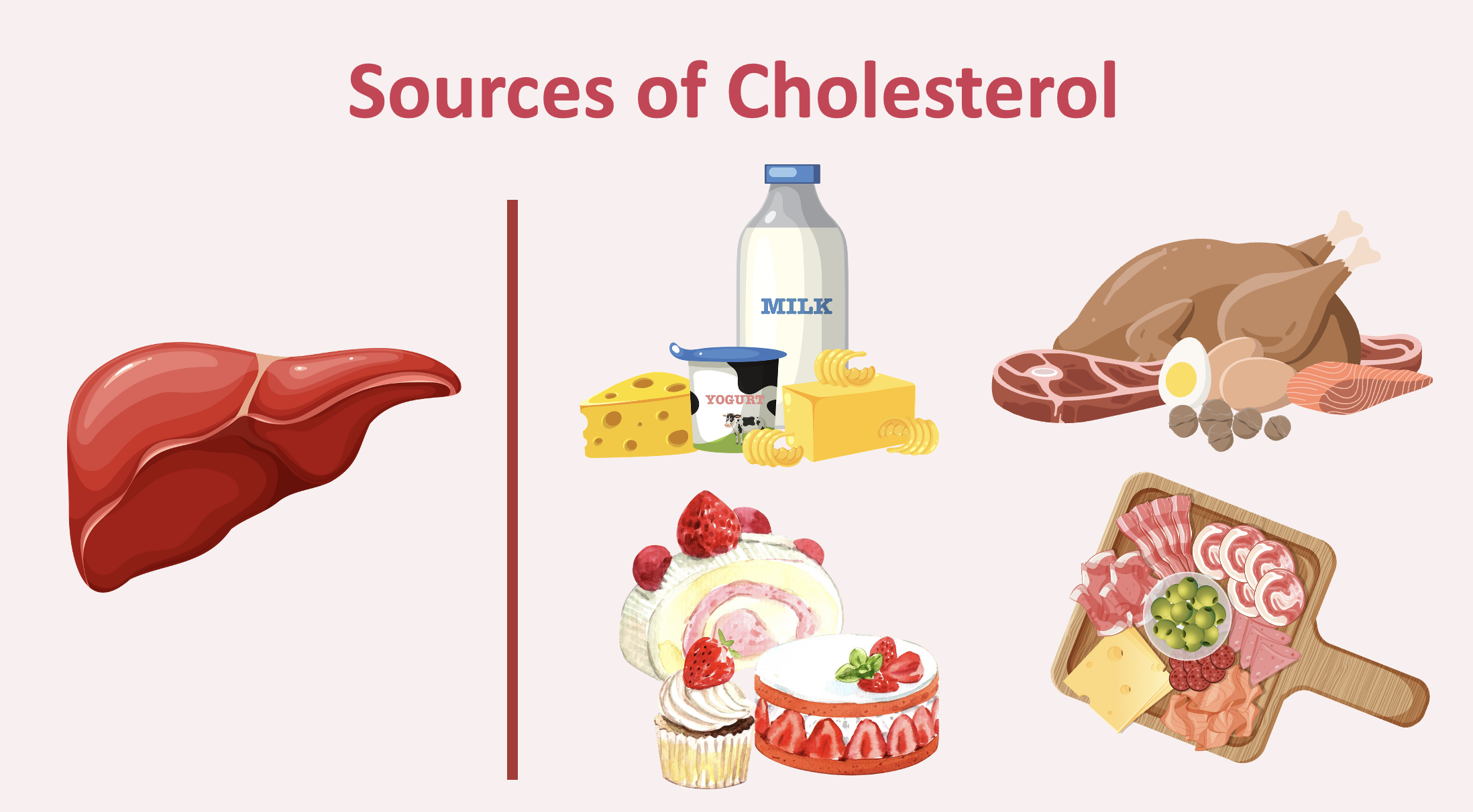Learn how to manage cholesterol levels naturally with these heart-healthy tips, including diet changes, exercise, and the importance of regular medical screenings.
I think I was in my late 20s or early 30s when I first learned I had high cholesterol at one of my annual exams. I remember being so nervous because to have abnormal blood levels of anything always meant something bad and to manage this condition meant to stop eating fat-containing foods. It wasn’t until decades later, when I was studying to be a Registered Dietitian, that I found out the many factors that can result in “high cholesterol” and that the treatments around it aren’t what I originally thought they’d be.
What Is Cholesterol?
First, let’s define what cholesterol is and does:
Cholesterol is a type of fat (aka lipid) that appears as a waxy substance. In the human body, it helps with the process of making cells, certain hormones, and vitamin D. It’s considered a non-essential nutrient, meaning that we don’t need to eat foods that have cholesterol in them because it’s already produced in our liver. This is why people who have over-achieving livers end up with something called familial hypercholesterolemia, literally elevated (hyper) cholesterol in the blood (-emia) based on genetics (familial). And this is also why, if you’re dealing with familial hypercholesterolemia, removing cholesterol from your diet—animal foods and foods that are high in trans and saturated fats—might not make a difference in your blood test at your next exam, and why your doctor might discuss putting you on medications known as statins.

Cholesterol can also increase on its own to unhealthy levels if there’s something funky going on behind the scenes related to lipoproteins, which transport cholesterol in the bloodstream:
- Low-density lipoprotein (LDL) transports cholesterol to the body
- High-density lipoprotein (HDL) transports cholesterol from the body
- High LDL + low HDL = poor removal of excess cholesterol
When our cholesterol is out of control (say, when high LDL levels cause plaque buildup in arteries), it can put us at risk for the following heart-related and other conditions:
- Coronary Heart Disease (CHD)
- Stroke
- Peripheral Vascular Disease (PVD)
- Type 2 Diabetes (T2D)
- Kidney Disease (CKD)
- Polycystic Ovary Syndrome (PCOS)
- Hypothyroidism
Then, we have triglycerides (TGs) to consider. TGs are another type of fat (lipid) that is part of the “total cholesterol” we see on our blood panels. TGs store unused calories—yes, that’s where all that extra bread or alcohol may be going—and provide your body with energy, but can also be greatly influenced by lifestyle habits, as can most everything in charge of running our bodily functions.

Cholesterol Diagnoses
Getting your cholesterol checked at your annual exam via a blood test can give you an idea if you’re at risk for any of those conditions listed above; but, according to the CDC, you’re good even if you get it checked every 4 to 6 years. However, if you or your family have a history of heart disease, diabetes, or high cholesterol, you should get screened more often.

As I teach my nutrition students, always question research, so I’m excited to share that some recent studies are now challenging traditional views on cholesterol, especially the role of HDLs in cardiovascular health. For decades, high HDL levels were thought to protect against heart disease, while low HDL was seen as a risk factor. However, newer research shows that this may not be universally true.
- HDL Cholesterol: While high HDL levels were once believed to lower cardiovascular risk, recent studies suggest that very high levels of HDL (above 80 mg/dL) may not confer protective benefits. In fact, excessively high HDL could be associated with an increased risk of mortality, particularly in populations with pre-existing cardiovascular conditions. Researchers are now exploring the function of HDL—its ability to transport cholesterol efficiently—rather than just its quantity.
- LDL Cholesterol: LDL, or “bad” cholesterol, continues to be a major focus in heart disease prevention, but its risks are also being re-evaluated. While high LDL levels are still linked to heart disease, more attention is being paid to the ratios of LDL to HDL, rather than just the individual levels. Current guidelines are focusing more on managing LDL levels based on an individual’s overall risk profile, rather than aiming for blanket cholesterol targets.
- Racial Disparities: Studies have also uncovered racial differences in how cholesterol impacts heart health. For example, low HDL levels are associated with increased heart disease risk in white adults but not necessarily in Black adults. These findings suggest that existing cholesterol guidelines, which were developed largely based on studies of white populations, may not apply equally across all ethnic groups.
As a healthcare professional, this is why it’s important to read our clinical newsletters, attend conferences, and discuss with our colleagues how to adjust our approaches—in this case, to cholesterol management—when new studies come to light. Instead of pushing low-fat diets, Registered Dietitians like me are now engaging in interdisciplinary discussions to focus more on a person’s overall cardiovascular risk, including factors like genetics, lifestyle, and even racial background.
As a patient with a new diagnosis of high cholesterol, please know that there are revised guidelines that now emphasize a holistic view of heart disease prevention, where cholesterol is just one piece of the puzzle. Of course, balancing your HDL/LDL ratio through lifestyle changes—like diet, exercise, reducing alcohol intake—remains key, but it’s important to discuss with your provider what the most current guidelines are based on your individual risk profile. (PS: It’s OK to question your providers!)
Key Lifestyle Modifications to Manage Cholesterol
Dietary changes:
- Read the Nutrition Facts Labels on packaged food to gauge how much fat/total fat is in an item.
- Increase intake of fiber (whole grains, fruits, and veggies).
- Choose unsaturated fats over saturated fats.
Exercise:
- With medical clearance, aim for 150 minutes (2 hours and 30 minutes) per week of moderate-intensity aerobic activity such as brisk walking, dancing, or bicycling, or
- 75 minutes (1 hour and 15 minutes) per week of vigorous-intensity aerobic activity such as running or bicycling uphill, and
- strength-training exercises on 2 or more days each week.

Medical Screenings and Cholesterol Management
- Schedule your regular cholesterol screenings.
- Speak with your doctor to understand your cholesterol test results and which factors may put you at risk.
For more info, check out the recording of our “Cholesterol & Heart Health” webinar from February 2024:
References
- Anderson, J. W., et al. (2009). Health benefits of dietary fiber. Nutrition Reviews, 67(4), 188-205.
- Rosenson, R. S., et al. (2016). Primary prevention of coronary heart disease: Lipid modification. The Lancet, 388(10059), 583-593.
- Barter, P. J., et al. (2007). HDL cholesterol, very low levels of LDL cholesterol, and cardiovascular events. The New England Journal of Medicine, 357(13), 1301-1310.
- American Heart Association – Cholesterol. https://www.heart.org
- Mayo Clinic – High Cholesterol. https://www.mayoclinic.org
- Centers for Disease Control and Prevention (CDC) – Cholesterol. https://www.cdc.gov
- National Heart, Lung, and Blood Institute (NHLBI) – Cholesterol: What You Need to Know. https://www.nhlbi.nih.gov
- Harvard T.H. Chan School of Public Health – The Nutrition Source: Fats and Cholesterol. https://www.hsph.harvard.edu



0 Comments